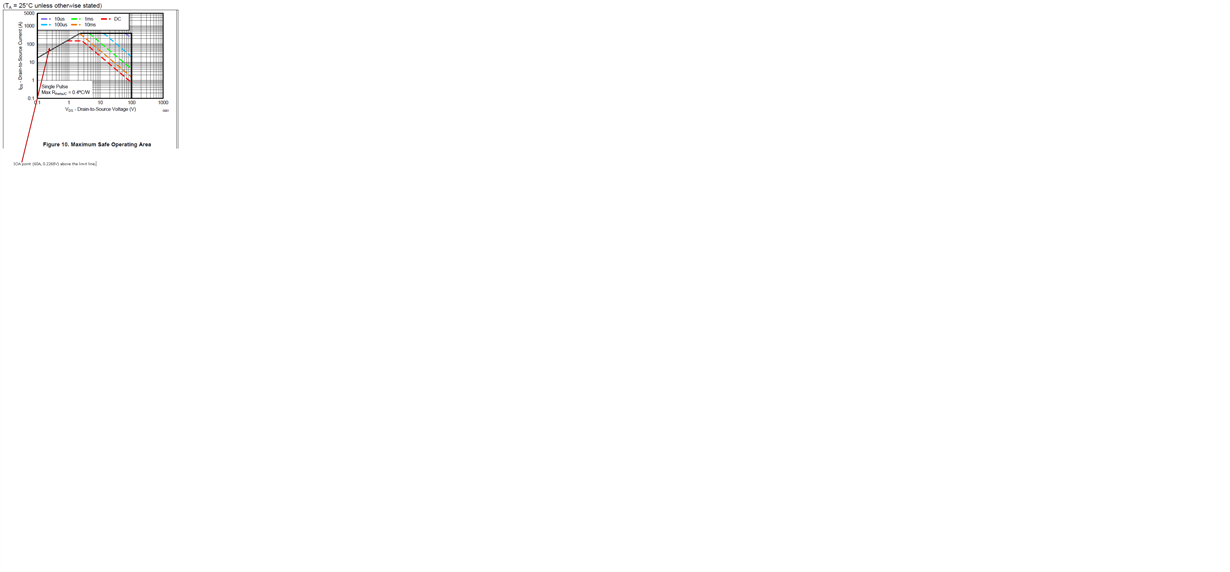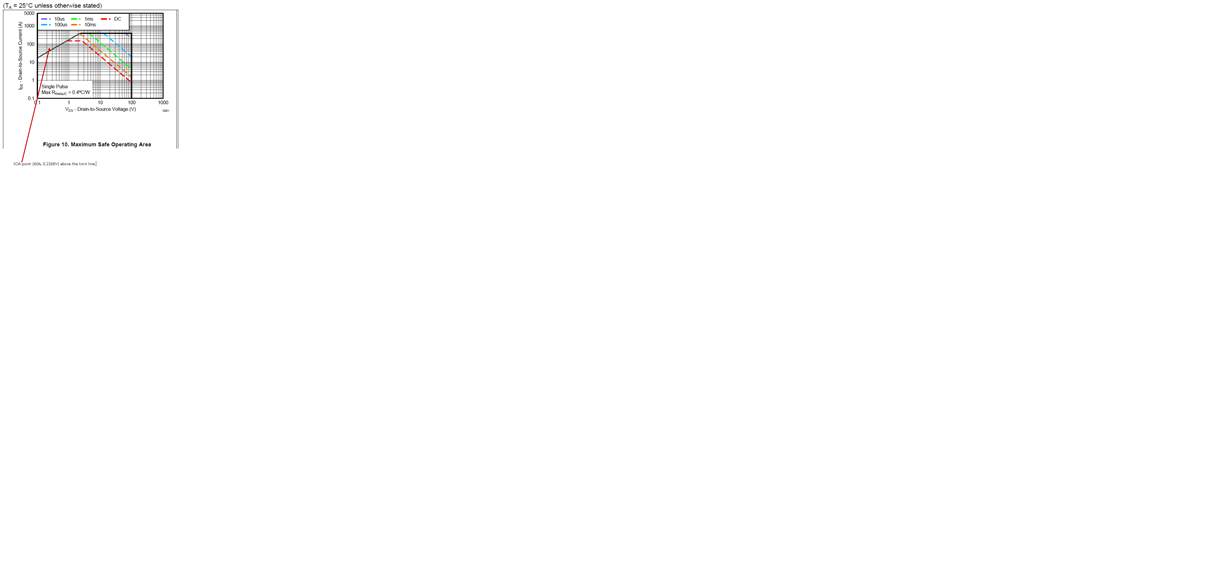Hello,
I am using MOSFET “CSD19536KCS” for my Motor drive Project.
Currently I am trying to find out SOA of MOSFET for my application.
Specs & Calculations:
Drain Current Ids: 60A
Max Tj = 85 Degree C (To be maintained)
Rds. ON max = 1.4*2.7 m Ohms = 3.78 m Ohms (from datasheet normalized Rds. ON curve figure.8)
So, Vds = 60*3.78 m= 0.2268V
If I mark these Ids (60A) and Vds (0.2268) values in SOA graph, SOA point is going above the Rds ON limit line. (see attached image)
I understood that, datasheet Rds ON limit line is drawn for Rds ON@Tj=175 Degree C. (Which is nearly 2.15*2.7m Ohms=5.80 m Ohms).
But how do I explain my self whether my MOSFET is in SOA or not , as SOA point is above the limit line?? Kindly explain.
Regads,
Govind.



